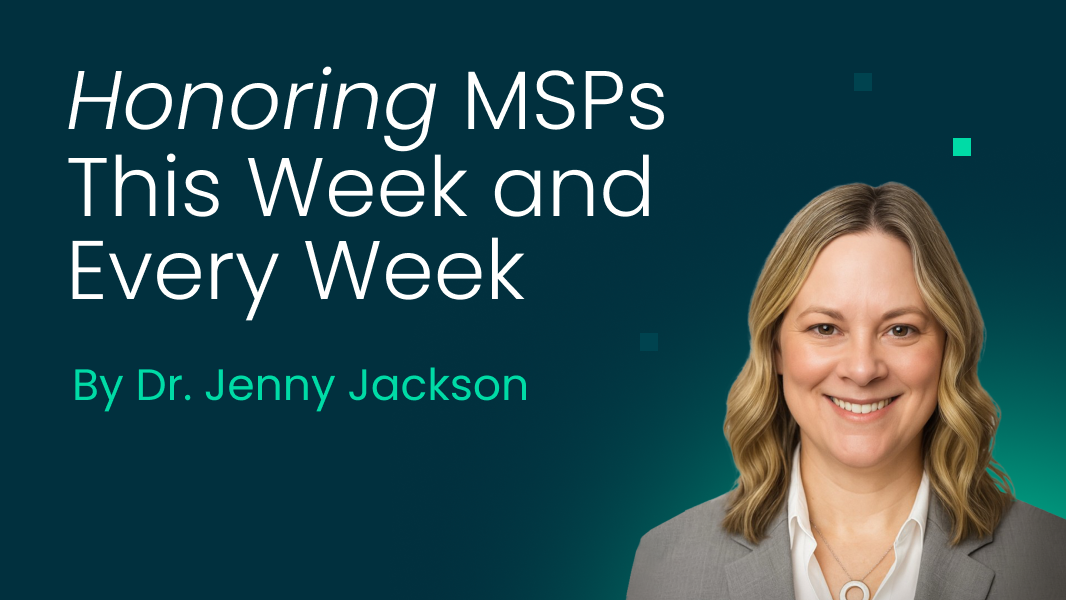Is your organization looking for a smarter way to handle medical credentialing? From preparation to automation, Verifiable can help you simplify this process.
Your organization works hard to offer high-quality medical care. The medical credentialing process is rigorous because shortcuts are not an option. The effort put into credentialing is worth the assurance it provides to patients. But, the administrative effort it requires has a real impact on organizational performance. Tedious? Absolutely. Time-consuming? Without a doubt.
But it doesn’t have to be that way.
We need our healthcare professionals to be proficient. Proficiency doesn’t only benefit the American public receiving care from medical providers. It reduces unnecessary costs for insurance companies and programs like Medicaid and Medicare. From nurse practitioners to specialized surgeons, the benefit of thorough credentialing is obvious. But there is a downside. The heavy administrative work can divert your staff’s focus. There is a delay in providing patient care while they are required to focus on paperwork.
Keeping up with credentialing is daunting. Perfecting the process, doubly so. With the right tools and mindset, this task can become more manageable. The journey toward efficient, streamlined medical credentialing begins here.
Why Medical Credentialing Matters
Medical credentialing is the process we use to set the minimum standard for our healthcare system. Americans deserve to have healthcare providers they can trust. They should be confident that their health is in good hands, no matter where they are treated. Credentialing is the process used to make sure that trust is well placed. Credentialing checks and re-checks every medical professional to ensure they can offer the minimum or better.
For provider organizations, negligence in the credentialing process can have dire consequences:
- Safety Concerns: Patients could receive care from unqualified or underqualified providers.
- Legal Implications: Without credentialing, healthcare providers may face lawsuits for malpractice or negligence or even sanctions against their medical license.
- Financial Ramifications: Proper credentialing is integral to the provider enrollment process with health insurance companies. If there’s a discrepancy in the credentials of a medical professional, it can lead to reimbursement claims being denied. For many healthcare providers, reimbursements from insurance health plans are a significant revenue source, so inaccuracies in credentialing can translate to substantial financial losses.
- Reputation Damage: News about a healthcare provider’s lapse can spread quickly. Such incidents can erode patient trust and deter potential patients from seeking care at the institution.
- Accreditation Risks: Accrediting bodies keep a close eye on the credentialing processes of institutions. Any lapses can jeopardize an institution’s accreditation status, affecting its legitimacy and ability to operate.
The Challenges of Credentialing
Credentialing is a challenging process. For healthcare providers, the volume of documents, the intricacies of verification, and tracking the changing regulations can be overwhelming.
Primary Source Verification (PSV) involves directly verifying a provider’s credentials from the original issuing source. This means contacting medical schools, previous employers, licensing agencies, and more. While it guarantees the veracity of the information, it is a labor-intensive and time-consuming task. It often requires long waiting periods for document retrieval, potential language barriers, and navigating unique verification processes for each institution.
Avoiding Common Pitfalls in the Credentialing Process
While credentialing can be challenging, there are a few common pitfalls that any credentialing expert would tell you to watch out for.
- Incomplete Credentialing Applications: Missing data or entry errors can delay the entire process.
- Failure to Update Records: Outdated records can cause confusion. Properly storing copies, digital or physical, of updated licenses, credentials, and education, as it happens, can save work hours later.
- Reliance on Manual Methods: Traditional verification processes can slow down credentialing and increase the likelihood of human error.
- Not Staying Abreast with Regulatory Changes: Overlooking regulation changes can lead to non-compliance.
How to mitigate these pitfalls:
- Implement rigorous application review processes.
- Schedule regular record updates so you are ready for re-credentialing.
- Explore digitization and automation tools for verification and ongoing monitoring
- Assign a dedicated team or individual to monitor regulatory changes and ensure compliance.
Best Practices for Effective Provider Credentialing
Provider credentialing is a meticulous process requiring attention to detail, accuracy, and thoroughness. By following a well-structured sequence, using modern tools, and taking advantage of delegated credentialing, healthcare organizations can reduce the burden of credentialing and keep their focus on patient care.
- Initial Application: Providers start by filling out a comprehensive application detailing their education, training, work history, and any specialized skills.
- Collection of Documents: Providers must submit various documents, including diplomas, licenses, certifications, and proof of malpractice insurance.
- Primary Source Verification: This step involves verifying the submitted documents directly from the issuing source, such as medical schools or licensing boards.
- Peer References: Providers must provide references from peers who can attest to their competency.
- Committee Review: The credentialing committee reviews the gathered information to make an informed decision about the provider’s eligibility to practice.
- Ongoing Monitoring: Regularly review and update the provider’s credentials to ensure they remain in good standing.
For organizations on the growth trajectory, it’s crucial not to let credentialing be a bottleneck. By utilizing the right resources and tools, credentialing becomes a smoother process, even for rapidly expanding healthcare networks.
The Digital Transformation in Credentialing
The past decade has seen a significant shift in credentialing. Traditional paper-driven, manual methods are giving way to digital solutions. These solutions not only streamline the process but also enhance accuracy and transparency. By transitioning to digital platforms, healthcare organizations can manage data more efficiently, update records in real-time, and ensure instant access to vital information.
The Role of Automation in Streamlining Credentialing
Beyond digitizing the process, modern tools like APIs and AI are creating powerful automation tools to reduce the administrative demand. Automation offers improved:
- Accuracy: Automated systems mitigate human errors. From records requests to the application process, automation ensures the data remains accurate throughout every step.
- Speed: Automation can significantly reduce the time taken for credentialing from months or weeks to days or hours.
- Cost-Effectiveness: Automated solutions can lead to significant cost savings in the long run by reducing manual labor and overheads.
- Increase Revenue: Because providers are credentialed faster they can start seeing patients (and generating revenue) faster.
Delegated Credentialing: A Modern Approach
Delegated credentialing is an arrangement where a healthcare organization entrusts another entity to perform certain credentialing activities on its behalf. This could mean a provider organization delegating credentialing to a certified Credentialing Verification Organization (CVO), or a payer organization delegating credentialing to a certified provider org. The benefits are numerous:
- Reduce Costs and Increase Revenue: Reducing the overall amount of paperwork providers are responsible for frees them up to see more patients. Increased patient encounter volume directly correlates with organizational revenue and, ultimately, reimbursements. Delegated credentialing reduces administrative costs by avoiding investment in building and maintaining a credentialing team.
- Reduced Payer Enrollment Timelines: Delegated credentialing agreements can greatly reduce the time it takes to successfully enroll a provider with a Health Plan. Without delegated credentialing, it can take payers up to 120-160 days to credential a provider. Obtaining delegated credentialing agreements with payers can reduce this timeframe to 30-45 days.
- Preserve Medical Staff Bandwidth: Providers performing health procedures at several facilities within an organization carry an additional credentialing burden - each facility must verify the same credentials. Centralizing the process can help optimize the process and give the medical staff more time to attend to other responsibilities - including privileging and board approvals. Delegating the credentialing process to entities with the appropriate expertise and resources streamlines the process. Healthcare organizations can focus on patient care, while the delegated entity handles the time-consuming task of verifying credentials.
- Save Provider Time: In a normal scenario, providers working across separate facilities would need to individually complete credential verification paperwork for each facility. Centralizing the process saves providers a lot of time and reduces energy expenditure redundancies.
- Reduced Liability: Delegated entities are often well-versed in the latest regulatory requirements. This helps healthcare organizations stay compliant with evolving healthcare laws and regulations. Outsourcing with a trusted delegate lets the experts handle it and share in the liability. If any credentialing-related issues arise, the delegated entity shares responsibility, which can be a relief for healthcare organizations.
To learn more about how to perform delegated credentialing, get access to our handbook.
Looking Ahead: The Future of Medical Credentialing
The medical world is constantly evolving, and with it comes the need for thorough oversight. Keeping up with education, board certifications, and licenses is a given in the profession. But there’s a rising demand for physician credentialing to be swift, precise, and affordable. Fortunately, the medical credentialing process is changing to meet these needs. Here’s a look at some developments that are redefining the landscape:
- Digital Verification: Embracing technology means the increasing importance of digital verifications, allowing instant and accurate checks against databases, reducing fraud, and ensuring authenticity.
- National Databases: Platforms like the National Practitioner Data Bank (NPDB) offer centralized information about healthcare providers, which can streamline the verification processes and enhance transparency.
- Universal Application Systems: The introduction of universal application systems can simplify the process of credentialing for providers, allowing them to submit their credentials to multiple entities simultaneously. Such systems can significantly reduce redundancy and streamline the process, benefitting healthcare professionals and institutions.
As we delve into this new era of medical credentialing, how is your organization gearing up for these transformative changes? Are you still navigating the waters with manual processes? Could your operations benefit from the precision and convenience of automation technology, perhaps from a trusted organization like Verifiable? If harnessing efficient, accurate, and user-friendly systems resonates with you, join us as we look at ways you can empower your organization with more efficient credentialing.
Empowering Medical Professionals through Efficient Credentialing
Efficiency in medical credentialing holds implications far beyond mere operational effectiveness. A well-structured credentialing process gifts medical professionals more time and energy to channel into their foremost duty: patient care.
Moving the credentialing process to the organizational level can profoundly enhance this efficiency. By centralizing and systematizing this procedure, you can significantly reduce the onus on individual medical professionals. This approach has multifaceted benefits:
- It streamlines the overall process, ensuring that professionals don’t get entangled in procedural intricacies and can focus on their medical practice.
- It ensures uniformity in the process, meaning that all professionals undergo the same rigorous checks, upholding the organization’s credibility and reputation.
- It often speeds up the process since organizational resources, both human and technological, can be utilized, leading to faster credentialing and onboarding of medical staff.
So, what steps can your organization take to transfer the credentialing process from an individual to an organizational level?
- Implementing Automated Systems: Transition from manual to automated credentialing to drastically reduce verification and approval timelines. Such a shift doesn’t only accelerate the procedure but also curbs potential human errors.
- Continuous Training: Regularly refresh your medical staff on the newest credentialing advancements and stipulations. Training ensures they’re continually in the know, preventing unforeseen procedural surprises.
- Centralized Platforms: Adopt a cohesive platform where healthcare professionals can access and refresh their credentials. Such a system eliminates the chaos of managing several platforms, saving time and effort.
- Dedicated Support Teams: Invest in a specialized team devoted solely to aiding the credentialing process. Such a team can be the go-to for queries, assist in submitting documents, and mediate between healthcare professionals and the credentialing bodies.
By moving the credentialing process to an organizational plane, not only do you shield individual medical professionals from unnecessary distractions, but you also set the stage for a smoother, faster, and more efficient process.
The Return on Investment: Measuring Credentialing Efficiency
Efficient credentialing is not just about speed; it’s about the value it brings to a medical practice, both operationally and financially. Here’s how:
- Operational Excellence: With streamlined processes, there’s a reduction in follow-up requirements, less back-and-forth communication, and minimized delays. Streamlining ensures that healthcare professionals can start their practice sooner, enhancing patient care and satisfaction.
- Financial Benefits: Efficient credentialing means quicker enrollment with payers. The faster credentialing goes, the sooner they can start billing insurance carriers, improving cash flow. Moreover, accurate credentialing can prevent costly billing errors and denials, safeguarding the revenue stream.
- Competitive Advantage: In an industry where every edge matters, being known for a quick and hassle-free credentialing process can be a unique selling proposition. It can attract top-tier talent who prefer institutions that value their time and effort.
In essence, investing in efficient credentialing processes isn’t just an operational decision; it’s a strategic one that can lead to both tangible and intangible returns for a healthcare organization.
The Road to Smarter Credentialing
As the medical landscape evolves, so should the methods we employ. Automation is a tangible solution that can revolutionize the tedious, manual methods that have historically plagued the credentialing process. Automated systems, coupled with centralized platforms, not only ensure accuracy but also speed up the procedure, making it more user-friendly and less error-prone.
Partnering with Verifiable amplifies these benefits. By leveraging our expertise and cutting-edge tools, you could achieve up to 78% faster credentialing turnarounds. Finding a great partner not only streamlines internal processes but also ensures that patients have quicker access to qualified professionals.
Are you poised to embrace the future of credentialing? The path to efficient, smart, and automated credentialing is within reach. Partner with Verifiable and usher in an era where administrative efficiency meets top-tier patient care.

.svg)




